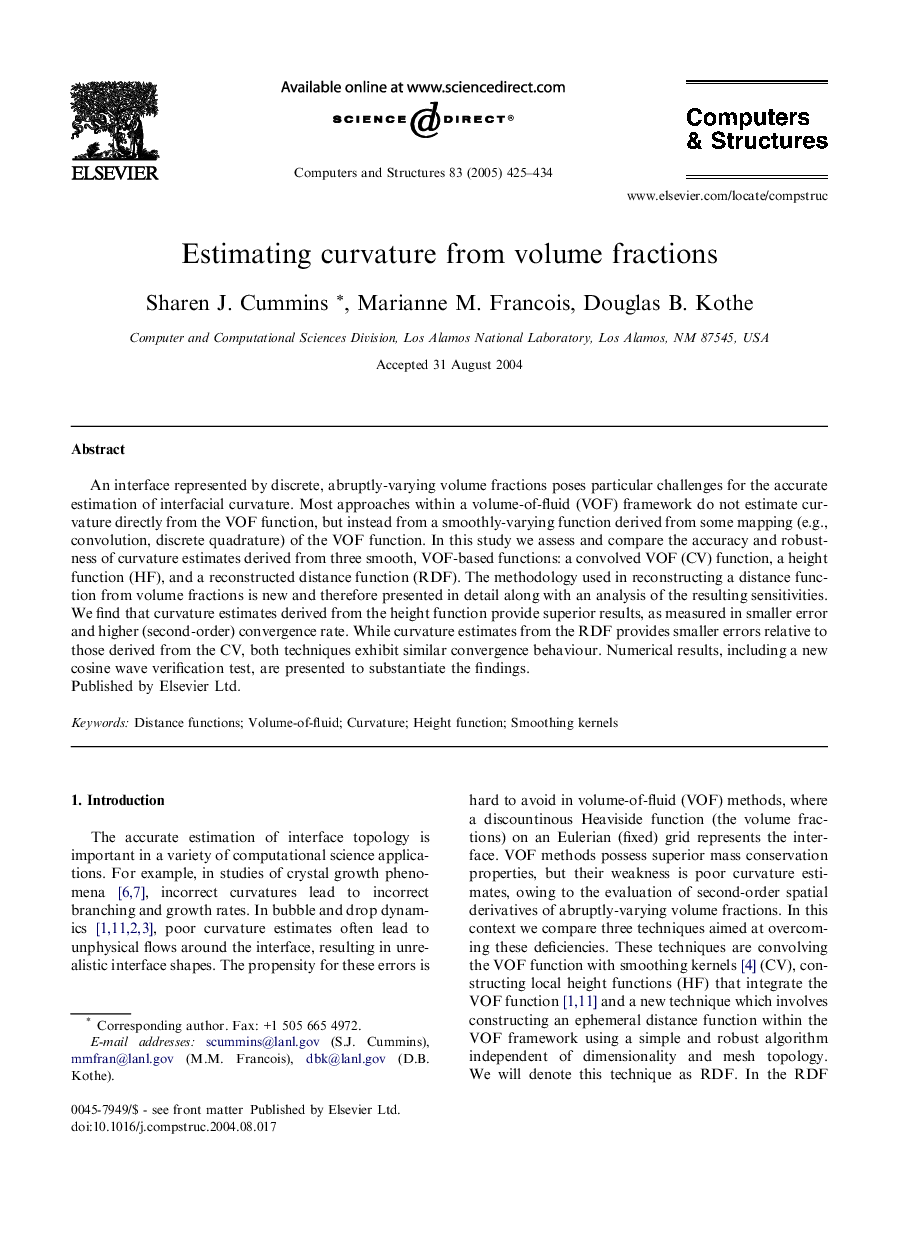| Article ID | Journal | Published Year | Pages | File Type |
|---|---|---|---|---|
| 9668238 | Computers & Structures | 2005 | 10 Pages |
Abstract
An interface represented by discrete, abruptly-varying volume fractions poses particular challenges for the accurate estimation of interfacial curvature. Most approaches within a volume-of-fluid (VOF) framework do not estimate curvature directly from the VOF function, but instead from a smoothly-varying function derived from some mapping (e.g., convolution, discrete quadrature) of the VOF function. In this study we assess and compare the accuracy and robustness of curvature estimates derived from three smooth, VOF-based functions: a convolved VOF (CV) function, a height function (HF), and a reconstructed distance function (RDF). The methodology used in reconstructing a distance function from volume fractions is new and therefore presented in detail along with an analysis of the resulting sensitivities. We find that curvature estimates derived from the height function provide superior results, as measured in smaller error and higher (second-order) convergence rate. While curvature estimates from the RDF provides smaller errors relative to those derived from the CV, both techniques exhibit similar convergence behaviour. Numerical results, including a new cosine wave verification test, are presented to substantiate the findings.
Related Topics
Physical Sciences and Engineering
Computer Science
Computer Science Applications
Authors
Sharen J. Cummins, Marianne M. Francois, Douglas B. Kothe,
